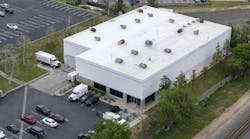The Baltimore Police crime laboratory has a backlog of 11,000 fingerprints collected from crime scenes that it hasn’t analyzed, the department confirmed this week, and it will be another year before it can process evidence from violent crimes in “real time.”
Those disclosures were made in response to questions from City Councilman Mark Conway, following a report in The Baltimore Sun in which a whistleblower in the crime lab said he believes taxpayer money is being wasted as the crime lab collects evidence that it does not test.
Conway, who chairs the City Council’s public safety committee, said he was concerned by the department’s response, which blamed resource problems on a triage plan that prioritizes the most violent crimes and declines to process all samples from property crimes.
“Violent crime creates the most horrifying headlines, but property crime is what wears on communities and prompts people to leave the city,” Conway said in a statement. “We need to have a better handle on processing and closing these cases, and I’m not confident we are fully addressing property crime right now.”
The department’s written response, compiled by Kendall T. Jaeger, chief of the forensic science and evidence services unit, said the lab’s staffing has more than doubled from 72 people in 2014 to 167 in 2019, but its staffing remains far below what’s needed to handle the volume of evidence.
“Despite this increase in staffing, in order to have all units conducting analysis in ‘real time,’ the Division would ideally require nearly 300 people,” Jaeger wrote.
He said the latent print unit conducts 3,400 tests per year — three times the national average. Meanwhile, the police department solves 3.6% of reported property crime — a third of the national solve rate, according to data compiled by the police department.
That’s fewer than one in every 20 cases.
Jaeger said the triage approach “provides prioritization, organization, and systemization into what had been, at best, a disorderly business process” previously.
“While certainly not ideal, it is an industry accepted standard, which we stand by,” Jaeger wrote.
Ken Phillips, who was recruited to be a supervisor in the fingerprint section of the lab, told The Sun that he was concerned about the backlog and felt officials were downplaying it. A recently retired fingerprint examiner said he agreed.
“If you had a burglary in your house the last three or four years, the chance of getting results is zero to none,” said Roy Michael Jones, a fingerprint analyst for more than 30 years who retired in frustration in 2019.
In addition to the failure to analyze evidence from nonviolent crimes, Phillips said there is a backlog of unprocessed evidence from thousands of cases that could help convict suspects or clear the wrongly accused. Mostly leftover from years ago, they include murders, rapes and carjacking cases, he said.
Conway said he plans to tour the lab and wants to explore potential solutions for increasing the processing of evidence.
“This seems like a natural place where Baltimore could be leaning on our state and federal partners, as well those in surrounding counties,” he said.
Jaeger told Conway that the property crime evidence is still retained, and can be tested “if/when requested” but are by default placed into a “decline” category.
The police department in its response also addressed problems flagged in the work of a firearms examiner, whose work over a 10-month period has been called into question. Jaeger said it was discovered that swabs collected by the examiner were “missing from at least three evidence packages and or were mislabeled or switched.”
Jaeger said the examiner had to be retrained in June 2020 “as a result of several corrective actions” related to previous work and at that time began swabbing handguns for DNA evidence.
When the latest problem with his work was discovered in April, all swabbing of firearms was halted for four weeks to determine the extent of the matter.
“The consequences of allowing casework to continue without understanding the full impact of the error or continuing to offer the service without knowing the root cause could be catastrophic,” Jaeger wrote.
He said the problem was limited to the one examiner, and that there has been no loss of evidence.
“This was an excellent example of the laboratory’s quality assurance systems working,” he said.
______
©2021 Baltimore Sun.
Visit baltimoresun.com.
Distributed by Tribune Content Agency, LLC.



